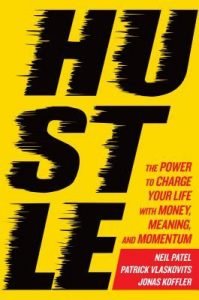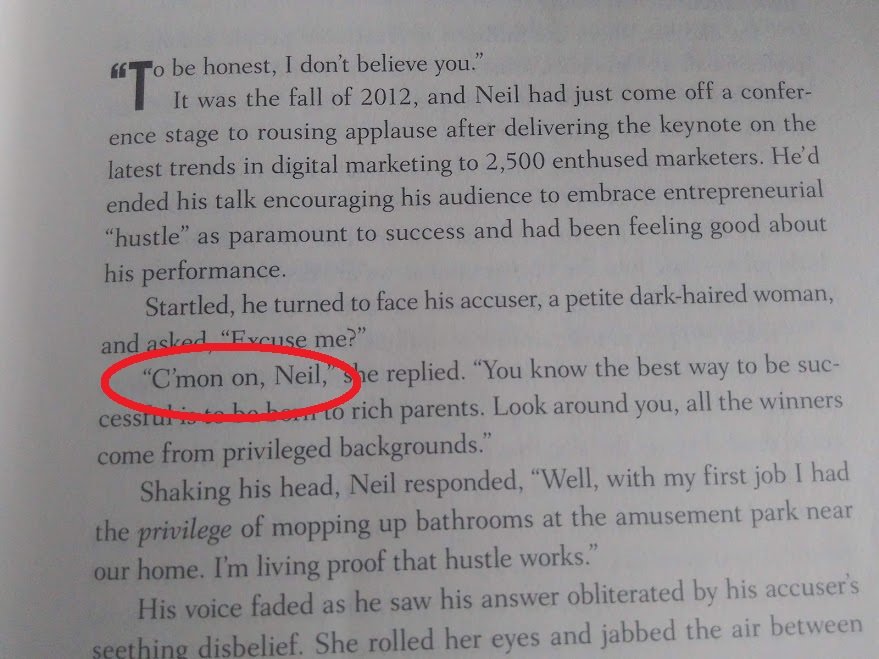In Hustle, the authors spent so much time trying to convince you why you should hustle that it gets old after a while. The repetition could be because the book is co-authored by three guys (Neil Patel, Patrick Vlaskovits, Jonas Koffler) and they had no idea they were circling back to the same points again and again.
There’s also their annoying proclivity for invented buzzwords and phrases – such as Mediocrity of Meh, Cycle of Suck, Madness of Mastery, you get the drift – that makes it difficult to take things seriously, let alone read.
And right from the beginning, there’s an error, which doesn’t augur well.
However, you have to love the way the authors took digs at the concepts put forth by other prominent authors. (I suspect this is probably an influence of Neil Patel’s straight-talking ways.)
On Sheryl Sandberg:
These days, however, loyalty doesn’t translate to success, and “leaning in” doesn’t lead to fulfillment.
On Malcolm Gladwell’s 10,000-hour rule:
Like Anders Ericsson who called the rule “a provocative generalization”, the authors also insisted that “innate talent maintains a central role in ultimate success. For instance, if you don’t have the talent for playing the guitar, no matter how many hours you practice playing it, you will never be a world-class musician.”
In “Gritty Little Lies”, the authors tried to debunk Angela Duckworth’s theory by suggesting that “success begets grit, grit begets success”.
“The truth is that grit and success have a paradoxical chicken and egg relationship.”
“It’s easy to get up early in the morning to get a workout in and sip down a green smoothie when you know all is well at the office and at home.”
In “Start with What, Finish with Why”, it’s quite clear who the authors are firing their salvo at:
Incalculable amounts of digital pixels have been rendered encouraging those of us who are stuck to “find our why” – whether in bestselling books, TED talks, or even speeches in high school gyms.
These motivators tell us that finding one’s why is the first step and, therefore, the keystone to charting a life trajectory that will be both meaningful and full of money.
It’s hard to think of a bigger lie than this.


